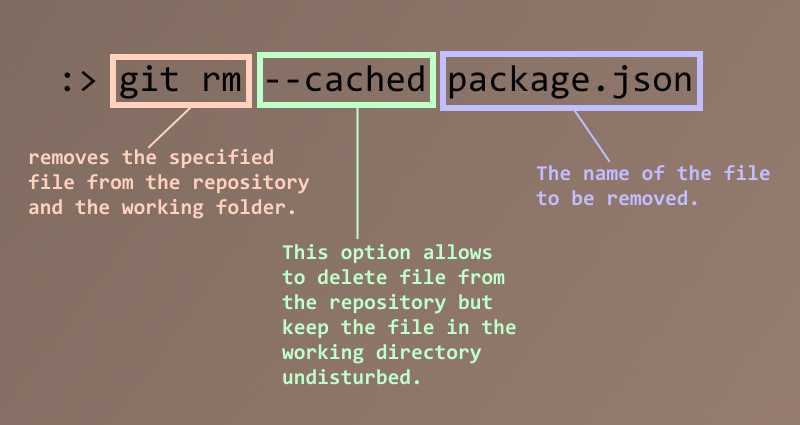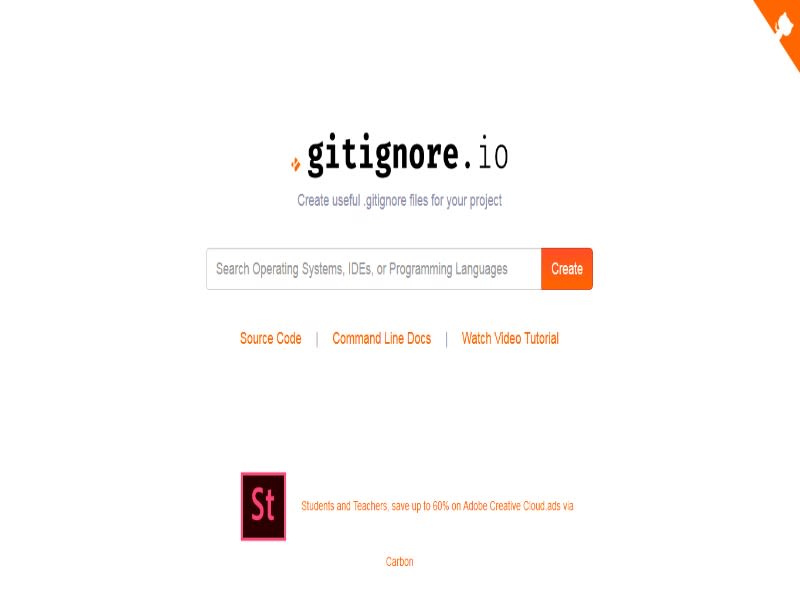Hello world,
I’ve been playing around with GitHub & Git over the past few months and most of the time I accidentally commit and push files that are totally unrelated to the project. Usually they are the environment files like node_modules & build directories and package.json when using node.js as I use Gulp to minify css & JS and files like _site folder and Gemfile.lock when I use Jekyll for my blog.
The reason for this problem? I forget to add the .gitignore file to my repository. The .gitignore file contains all the ignore rules (usually names of files and folders to be ignored) for the project. But there is a catch. The .gitignore file will tell Git to ignore the existence of only those files that haven’t been pushed. Since I have already pushed the files, adding them to the ignore rule won't work. Git will keep tracking the changes to those files and nag me to commit those changes.
I could delete these files and push the deletions to the repo but, they’re going to be recreated every time I build the project. So, that doesn’t work. A quick search on the internet gave me the exact solution I needed. There is a way to remove these files from the repo and keep them locally. By executing the following command in a CLI like git bash or cmd I deleted the files from the repo without removing them from my local file system.
git rm --cached <file name>
E.g. git rm --cached package.json
 A break down of the command to remove a file only from the repository
A break down of the command to remove a file only from the repository
git rm –r --cached <directory name>
E.g. git rm –r --cached _sites
 A break down of the command to remove a folder and it's contents only from the repository
A break down of the command to remove a folder and it's contents only from the repository
The --cached flag removes the files from the repository and leaves the local copies undisturbed. And the –r flag recursively removes the files inside the directory specified.
Now that I removed the files from the repo, Git thinks that the local copies of the deleted files are something new I added to the repo. So adding these file names to the .gitignore file will tell git to ignore these files and they won’t be pushed again.
Since this accident happens to me frequently, I decided to post this here so I wouldn't forget to add the ignore rules to the repo. Even if I do forget, I know where to look for the solution.
To make things more simple I found a site gitignore.io that generates .gitignore file based on the Operating systems, IDEs and programming languages that I provide in an all in one text box.  A screenshot of gitignore.io's homepage
A screenshot of gitignore.io's homepage




Top comments (18)
You should not ignore package.json, it is a key file shared between all the developers defining package dependencies. You should ignore build artefacts and installed dependencies and user specific configuration files such as IDE configuration, that is specific to a single user. Note that some IDE config files you don't want to ignore such as build configurations because they're the same for the whole team.
True. Also
GemfileandGemfile.lockshould be included for the same reason.Wow! Thank you so much for your valuable comments everyone. But, in my defense I want to make it clear why I talked about deleting package.json and Gemfile.lock files.
Thank you all again for pointing out the importance of package.json, package-lock.josn, Gemfile and Gemfile.lock files being in the repo 🙂
This is true.
package.json should exist in case one of your dependencies in package-lock.json is platform specific and package.json is used for finding a compatible version.
That's not why this happens. It happens because you're adding those files in the first place. Why are files you don't want to push even being tracked?
git addis meant to be a targeted operation, performed only on those files you want in the repo. Don'tgit add *or (worse)git add -Aand you won't have this problem.(I love
.gitignorefor its ability to hide things from the "Untracked Files" list ingit status. Because if you're not planning on tracking those files, get them off the list so that git can warn you if you haven't added any that you SHOULD be tracking.)Thank you for sharing about
git addcommand. Like I said in this comment, I use the GitHub Desktop app to commit and push my changes to the remote repo. Since It automatically adds all new files to the tracking list, The issue of committing unwanted files occurs when I'm not vigilant enough 😐.Thanks for the post and the useful links/images. This particular scenario can really be frustrating :)
Btw have you read a book on git? I found that a good book on git is much more valuable than guides / videos in that scenarios like this one occurred very very, infrequently as a result because of my deeper understanding.
Rather than have just a project-specific
.gitignore, which could contain the world, have one per project and a global config that includes all the common trash files (like the__MACOSXand.DS_Storefiles that Macs leave littered around the place, orThumbs.dbthat Windows generates) and a generic list of IDE trash like.nb_projector whatever.Some OS and applications are really quite bad citizens but it doesn't need to add commits to your project.
Yep. Sometimes I like some sugar sprinkled over the documentation. I think that's why a book like "You dont know JS" is so popular :)
For git there is a book with actual exercises that helped me solidify the concepts - Git in a Month of Lunches.
These graphics are PHENOMENAL!
Thank you so much 😊
You're right!😅 Reading the manual or a book as mentioned by @tinmanjk should've been my first action when I was playing with GitHub repos. But GitHub's easy to use web interface and the GitHub App made me think that I did not need to look into the Git documentation. And thank you for the link to the e-book 👍🏽.
You're welcome. I think it's essential to have a safe environment to mess with a new thing in order to learn better the ins and outs. Unfortunately with source control it's generally not advisable to do that :) So here come the exercises, a way to progressively learn.
Thank you for sharing!
I agree. It's a very powerful git command every developer should be aware of!
You're welcome :)
I usually get my gitignore templates from here: github.com/github/gitignore
That is one good collection 👍🏽. I actually came across this repository when writing this article. I did not mention this because, in the article I talked about me realizing that I did not add a .gitignore file after making a few commits to the repo and in my perspective it seemed a bit of extra work to select the templates for Operating system, programming language and IDE separately instead of providing the above mentioned as input and get a combined file. Thanks for mentioning this good collection of templates here :)